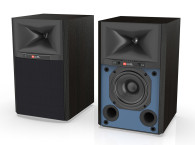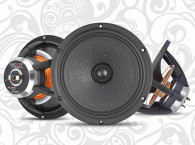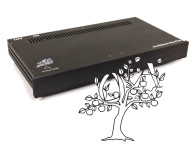
Mark Levinson is recognized as the founder of Mark Levinson Audio Systems (MLAS), the audio manufacturer based in New Haven, Connecticut where he created products such as the LNP-2 preamplifier and promoted the concept of high-end car sound. The original MLAS engineering team included John Curl, which designed many of the company's original products. Following the company's bankruptcy in 1980, Mark Levinson branded audio products are now owned by Harman International with no involvement from the founder.
With Cello, the luxury audio company he formed in 1984, Levinson created radically new audio concepts, including high end speakers at stratospheric prices. With gifted engineers Tom Colangelo and Richard S. Burwen, Levinson introduced groundbreaking products such as the Cello Audio Palette, a sonically transparent equalizer that was adopted in many professional recording and mastering studios, including those from Polygram, BMG, and Atlantic Records. The equalizer's circuits are based on specifications developed by Dick Burwen, Mark’s electronics mentor which helped him also in the early MLAS preamplifier designs.
Mark Levinson is also a top-level professional bass player, having played in his early years with Sonny Rollins, Paul Bley, Keith Jarrett, Chick Corea, Jimmy Garrison, Stan Getz and many others. Because of that combination of experiences, Levinson is also a renown recording and mastering engineer. During his four decades of designing and marketing high-performance audio products, Levinson also made legendary recordings of jazz, blues, classical, and Indian music.
Mark Levinson is now fully focused on Daniel Hertz, an audio engineering and manufacturing company founded in 2007 in Switzerland, with a division and subsidiary in Venice Italy, where all Daniel Hertz speakers are hand built. Not being able to use his own name - now a name brand owned by Harman - Mark Levinson wanted his new company to have a family name, so he used Daniel, his father's first name, and Hertz, his mother’s maiden name.
With his engineering team at Daniel Hertz, earlier on, Levinson developed a new class of audio chips with embedded C Wave (Continuous Wave) software called Mighty Cat. The Mighty Cat chips, combined with the company's own audio architecture and speakers, are promoted as delivering the experience of pure analog from any digital source, including streaming.

According to Mark Levinson, "Our new technology is the first fundamental development in the audio industry since the 1970s. Daniel Hertz products are the best I have ever produced. My associates and I are proud to offer them through the Daniel Hertz website."
The Daniel Hertz Maria amplifiers using the Mighty Cat Class D chipset replace the traditional DAC, preamplifier, amplifier, headphone amplifier, and active crossovers in one single chassis made of art-grade Perspex with hand-polished stainless steel knobs and buttons. Currently the Maria range is available in three models, all offering integrated analog inputs (1 meg ohms), USB, digital S/PDIF coaxial, Wi-Fi and Bluetooth.

All Maria amplifiers have an internal tunable headphone amplifier circuit and fully programmable active crossovers that enable precision tuning in .1dB increments required for bi-amplifying speakers without compromise. The built-in tuning software allows users to optimize the response for high-quality speakers and headphones from many manufacturers, and allows the company to deliver Maria amplifiers with precise tunings for all Daniel Hertz speakers.

High output current and low output impedance enable the Mighty Cat power stage to drive all high-quality speakers with ease, and with no audible noise. Power supply regulation is provided by a custom switching mode power supply, while the analog inputs have one megohms input impedance, an innovation introduced by Mark Levinson, which eliminates the loading of analog source devices.
Daniel Hertz latest active amplifiers also use the company's electronics and combine essentially many of the features of the Maria amplifiers, including DAC and wireless audio connectivity. A recent example, which was previewed at CES 2023 in the GaN Systems demonstration suite, are the Max Studio Monitors, a traditional-looking bookshelf design that offers natural sound with pro audio muscle and fulfill the need for the ultimate in accuracy.

As Mark Levinson summarizes, "Daniel Hertz is the best of my 50 years of work in audio, achieving my dream of faithful music reproduction and offering a new, healthy model for serious music lovers worldwide."
www.danielhertz.com








